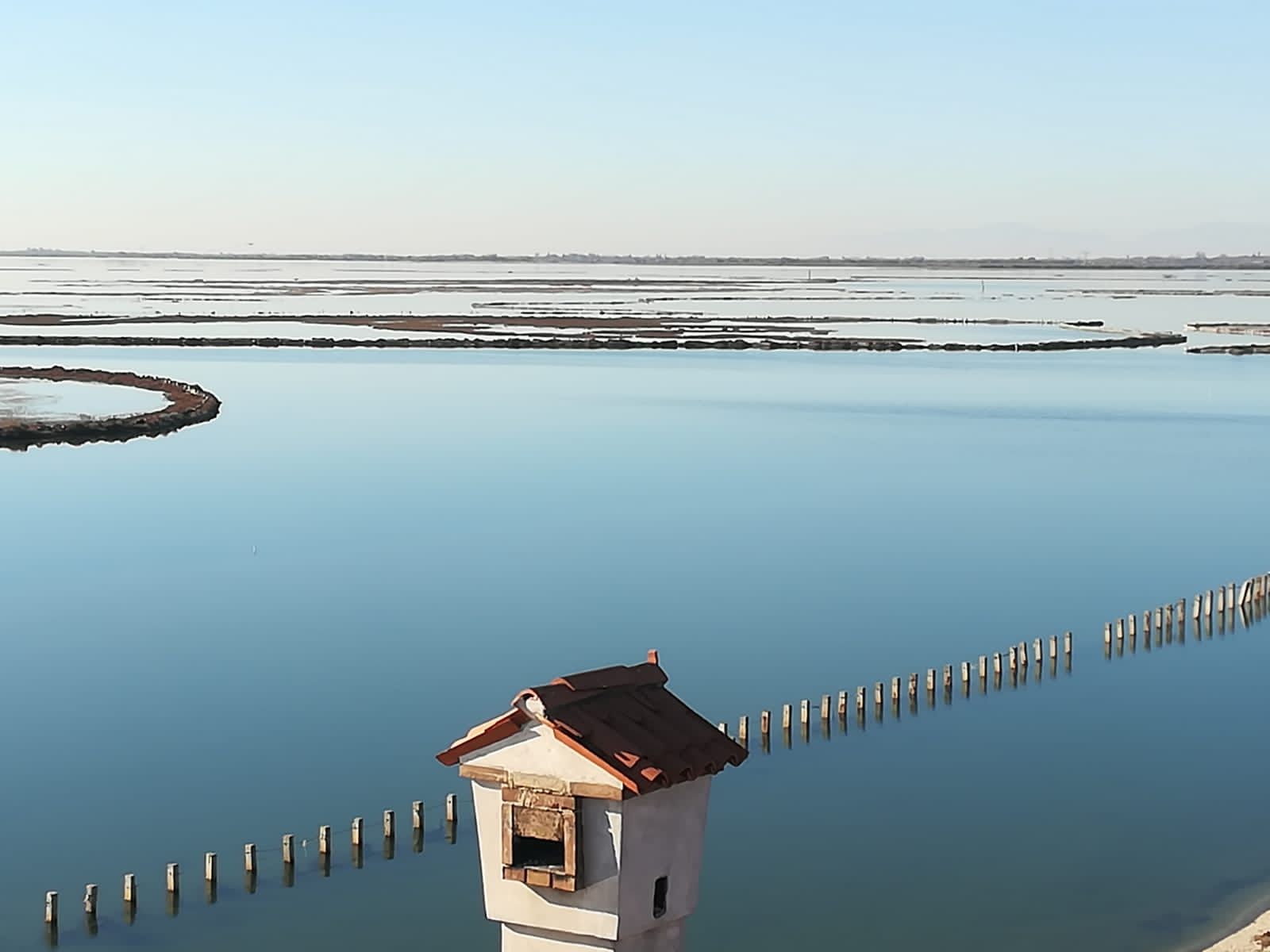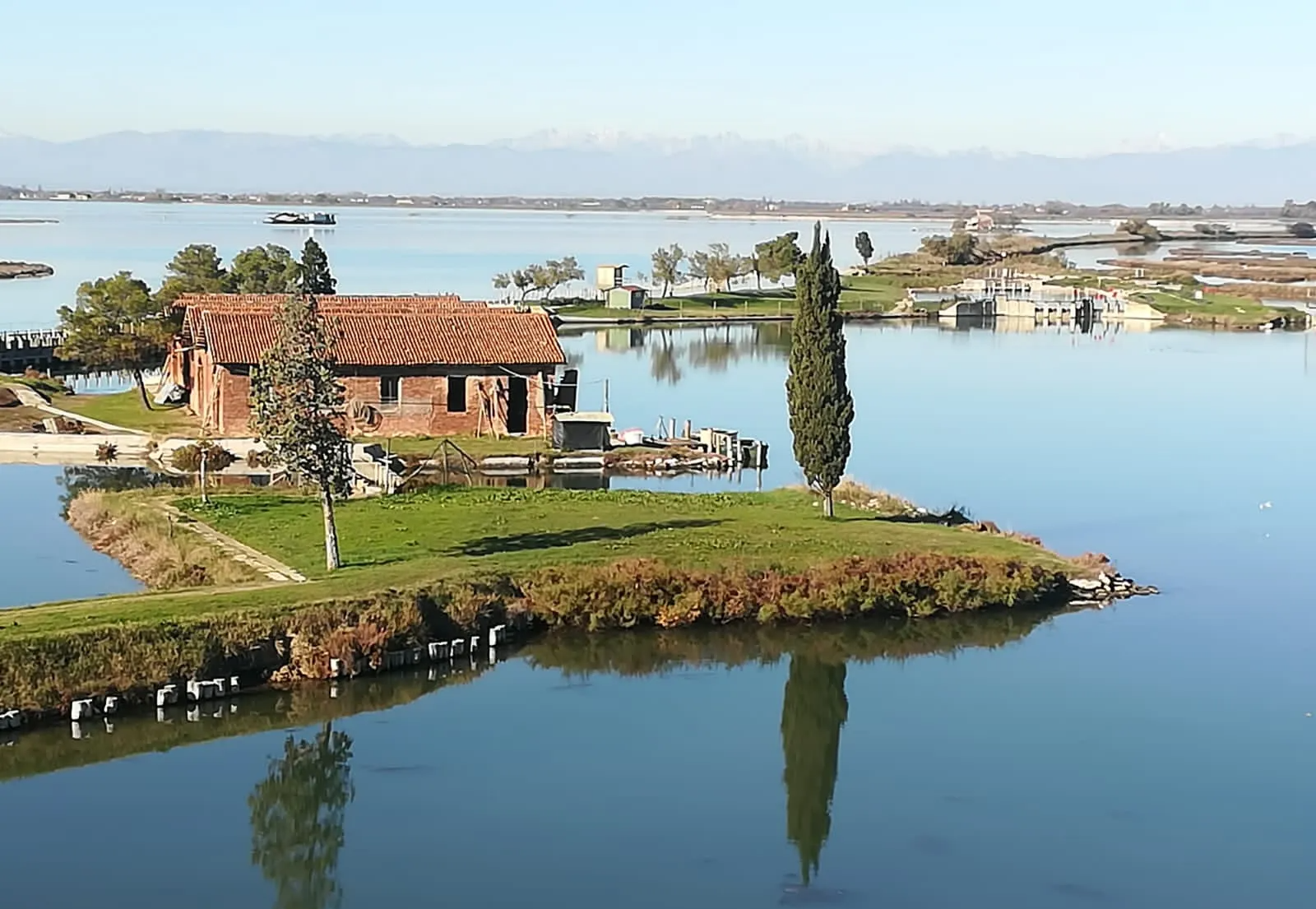About Us
VISION
Supporting the Venice lagoon today, for the world of tomorrow.
MISSION
Adapting the ancient knowledge of the Venice lagoon to the fight against climate change.
VALLE DOGÀ
In balance between the land and the water, in the Venice lagoon there is a one of a kind ecosystem that boasts a bounty of biodiversity paired with an immeasurable amount of ancient knowledge: the fishing valleys.
Valle Dogà is found in the Northern Lagoon, near the banks of the Sile canal, in the municipality of Caposile. It is one of oldest fishing valleys in the Venice lagoon which has been evidenced in maps since before the 1600s and is by far the largest valley.
History of the Valley
The name Valle Dogà is an abbreviation of the toponym Valle del Dogado Montiron, a testimony to the fact that this Valley was a kind of fringe benefit available to the Doges, who over time have alternated with the government of the Serenissima Republic of Venice.
The fishing activities in the valley have important historical roots. The documents of the time testify that already in the first half of 1800 the valley was semi-dammed to allow fishing activities. The banks were interrupted and completed by trellises of marsh reeds.
In 1928, the family Voltolina, then owner, transformed Valle Dogà from cane to iron completing the perimeter of the Valley with stable buildings of water management and equipping it with metal grids for the containment of the fish product.
To date, Valle Dogà extends to approximately 1,688 hectares, of which about 1,000 is occupied by brackish water basins, with salinity ranging from 20-30%. It also contains large lakes crossed by many natural canals. In it are also present all the elements of the Venetian valley, such as a set of bodies of water and semi-emerged lands (sandbanks), enclosed within banks, built of earth and reinforced by ballasts.
The vast extension of the Valley allows for a high environmental biodiversity, which translates into a significant qualitative and quantitative richness of the immersed and emerged plant and fauna present.
The current structure is the result of implemented actions over the years aimed at the conservation and enhancement of the environment for wildlife purposes. These measures are geared towards improving water circulation, replanting the banks, and reforestation of to create suitable areas of rest and shelter for aquatic migrants. The peculiar characteristics of the bodies of fresh and brackish water, of different sizes and depths, of which it has been tried to favor a good presence of submerged vegetation, are able to guarantee a natural source of food.
Thanks to its remarkable extension and to the great availability of different habitats, in Valle Dogà the presence of numerous species, such as that of waterfowl, have chosen it as an ideal habitat, especially for nesting.
Valle Dogà is managed for the purpose of breeding euryhaline fish species, such as sea bream, sea bass, eel and different species of mullet. Fish production is still practiced according to the traditional techniques of extensive valley farming and is considered one of the main producers of fish species in the Venice lagoon.





